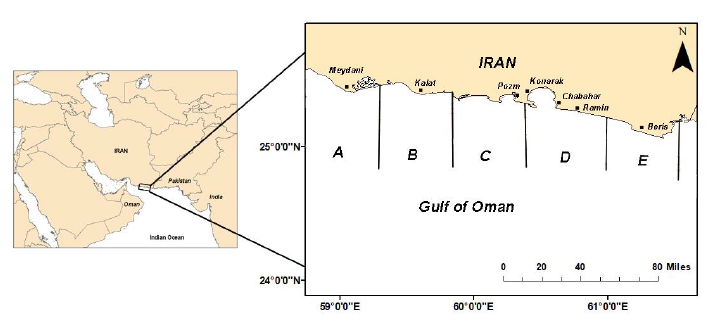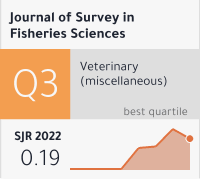Catch Per Unit Area (CPUA) estimation and distribution pattern of pharaoh cuttlefish from North Coast of Gulf of Oman
DOI:
https://doi.org/10.17762/sfs.v7i2.129Keywords:
Demersal fishes, Catch Per Unit Area, Sepia pharaonisAbstract
This research was carried out to assess the amount of Catch Per Unit of Area (CPUA) and also to determine the distribution pattern of Sepia pharaonis as one of the common species of cuttlefish caught in the north coast of the Gulf of Oman. Sampling was conducted at 70 trawl stations along the north coast of the Gulf of Oman (Meidani (58° 55' E) to Gwatre Bay (61° 30' E)) using classified random method. The study area was stratified to five stratum (A to E) covering the depth layers of 10-20, 20-30, 30-50 and 50-100 m. The highest value of CPUA for S. pharaonis was recorded in the central part of the study area (stratum C or Gordim and Rashedi, 1418 kg/nm2) and in depth layer of 50-100 m (819.1 kg/nm2). While, the lowest value was observed for stratum D (Chabahar, Konarak and Ramin, 24.6 kg/nm2) and in depth layer of 10-20 m (61 kg/nm2). It was concluded that the density of S. pharaonis showed ascending trend with increasing the depth. As an overall result, the west part of the Gulf of Oman were the ideal fishing ground for Pharaoh cuttlefish and the central region had the lowest density due to high fishing pressure of Pharaoh cuttlefish by fishermen in Chabahar and Konark.










